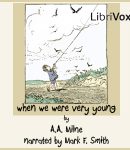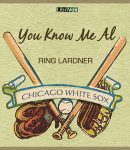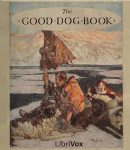
Short Poetry Collection 202
This is a collection of 51 poems read in English by LibriVox volunteers for March 2020. [chương_files]

This is a collection of 51 poems read in English by LibriVox volunteers for March 2020. [chương_files]

A.A. Milne wrote many poems to entertain his young son, Christopher Robin Milne, who appears to have been about three when “When We Were Very Young” was published. The book is a collection of 45 poems that celebrate a world and a point of view that a very young person could understand and enjoy. It became a best-seller. Christopher Robin is introduced as a character in some of the poems. We first meet him in the Preface, “Just Before We Begin.” In it we learn of a swan which he feeds upon a lake and who he has named “Pooh.” Milne comments on the fortuitous rhyming of that name with the lowing of the local cattle, “moo,” and intends us to believe that that led to the idea of writing the poems that comprise “When We Were Very Young.” Later, of course, this name became attached to a rather lovable bear who had whole books of his adventures written by Milne over the next few years. We will meet that teddy bear in one of poems of this book!- Summary by Mark Smith [chương_files]
The novel takes place 10 years after the Battle of the Plains of Abraham in 1759 when Quebec becomes a British colony. Written as a collection of letters, the story follows the relationships between Edward Rivers (a British soldier), his friend, John Temple (rather a cad), Emily Montague (a young British woman), and her dearest friend, Arabella Fermor (a flirtatious drama queen). Giving glimpses into the new frontier discoveries of Canada, one not only peeks into the personal relationships of these characters but gets swept away by the enticing descriptions of the “new world.” This is Volume 1 out of 4. [chương_files]

The order of the poems have been arranged according to age from first through eight grade. Grades I – IV are contained in part 1. This collection of poems in part 2 begins with Grade V and Elegy Written in a Country Churchyard by Thomas Gray. Grade VI begins with The Barefoot Boy by John G. Whittier. Grade VII begins with Ye Mariners of England by Thomas Campbell. Grade VIII begins with The Rhodora, On Being Asked, “Whence is the Flower” by Ralph W. Emerson. – Summary by Linette G [chương_files]

Clarissa Harlowe, the tragic heroine of Clarissa, is a beautiful and virtuous young lady whose family has become very wealthy only in recent years and is now eager to become part of the aristocracy by acquiring estates and titles through advantageous pairings. Clarissa’s relatives attempt to force her to marry a rich but heartless man (Roger Solmes) against her will and, more importantly, against her own sense of virtue. Desperate to remain free, she is tricked by a young gentleman of her acquaintance, Lovelace, into escaping with him. However, she refuses to marry him, longing — unusual for a girl in her time — to live by herself in peace. (Summary by Wikipedia) [chương_files]

In this epistolary novel, we find a young woman named Evelina, who was raised in rural seclusion until her eighteenth year because of her uncertain parentage. Through a series of harrowing and humorous events that take place in London and an English resort town, Evelina learns how to navigate the complex layers of 18th century society and earn the love of a distinguished and honorable nobleman. This comedy of manners often satirizes the society in which it is set; Evelina is a significant precursor to later works by Jane Austen and Maria Edgeworth, whose novels explore many of the same issues. (from Evelina’s Wikipedia entry, modified by ettelocin) [chương_files]

Big, fat, dumb, lazy, vain, headstrong and cheap, Jack Keefe is a journeyman pitcher with the Chicago White Sox in the rowdy days of the Deadball Era, circa 1915, ruled by the likes of Ty Cobb and John McGraw. In You Know Me Al, we follow Jack Keefe’s life on-field and off, via the letters Jack writes to his old chum Al in his home town of Bedford, Indiana. Ring Lardner was a Chicago sportswriter who covered the White Sox, and he brought an insider’s knowledge of clubhouse life together with his biting wit and gift for the vernacular to create a comic gem in You Know Me Al. The six Jack Keefe stories that compose this volume were originally written as individual magazine articles, but the epistolary format made it easy to collect them into a single running narrative covering Jack’s first two years in the Big Leagues. It isn’t necessary to know baseball history to enjoy the book, which is as much about Jack’s troubles with girlfriends, wives and babies as it is about the Chicago White Sox. For the baseball fan, however, this glimpse into a bygone era adds an extra layer of fascination. In any case, Lardner’s portrait of the professional ballplayer as a dumb, drunken narcissist is as funny today as the day it was written. (Summary by Rick Rodstrom) Dedicated prooflisteners: Rob Kunkel & Juli Carter [chương_files]

A collection of adult stories and poems – sad, humorous, and adventurous – about Man’s Best Friend. NOTE: Most of these selections contain violence that will be objectionable to some listeners. – Summary by TriciaG [chương_files]

Bill is in training camp, preparing to go off to World War I. This book is a collection of love letters written to his sweetheart, Mable. The letters are humorous, mis-spelled, and have many stories of life in an army camp – all from Bill’s unique perspective. (summary by Rob Kunkel) [chương_files]

Donne’s Style In John Donne’s day, a satire was such a poem as a satyr might compose. Satyrs were rough, savage creatures in Greek mythology, human to the waist but goat from there down. That is the reason that Donne’s style in these poems exceeds his normal difficulty in syntax, vocabulary, thought, and meter. His age enjoyed untangling such puzzles, and some poets cultivated obscurity as an art, called asprezza. Wordplay like “while bellows pant below” (Satyre 2), where the same syllables, stressed differently, produce two different words almost side by side, entertained them. An acoustical analogue to obscurity, Donne’s rhymes are often deliberately lame, while his rhythms nearly defy scansion and yet refuse to become mere prose. By keeping the drum beat just barely audible, he makes us feel that we are stumbling, out of step—neither marching nor merely walking. Why was this abuse of the reader enjoyable? Perhaps for the same reason that grafitti appeals to some people. At first glance Donne appears lax, but in fact he is naughty; not undisciplined but rebellious; he does not fail to abide by the rules but rather gives the impression of breaking them. Metempsychosis The poem appears to be incomplete, its “First Song” having no counterpart, no “Second Song.” Similarly its promise to end by identifying what celebrity the soul in question now inhabits is never fulfilled. On the contrary, the poem’s initial epic pretentions founder at the second generation of mankind rather than tracing human history from the Garden […]
Copyright © 2024 | FreeAudible